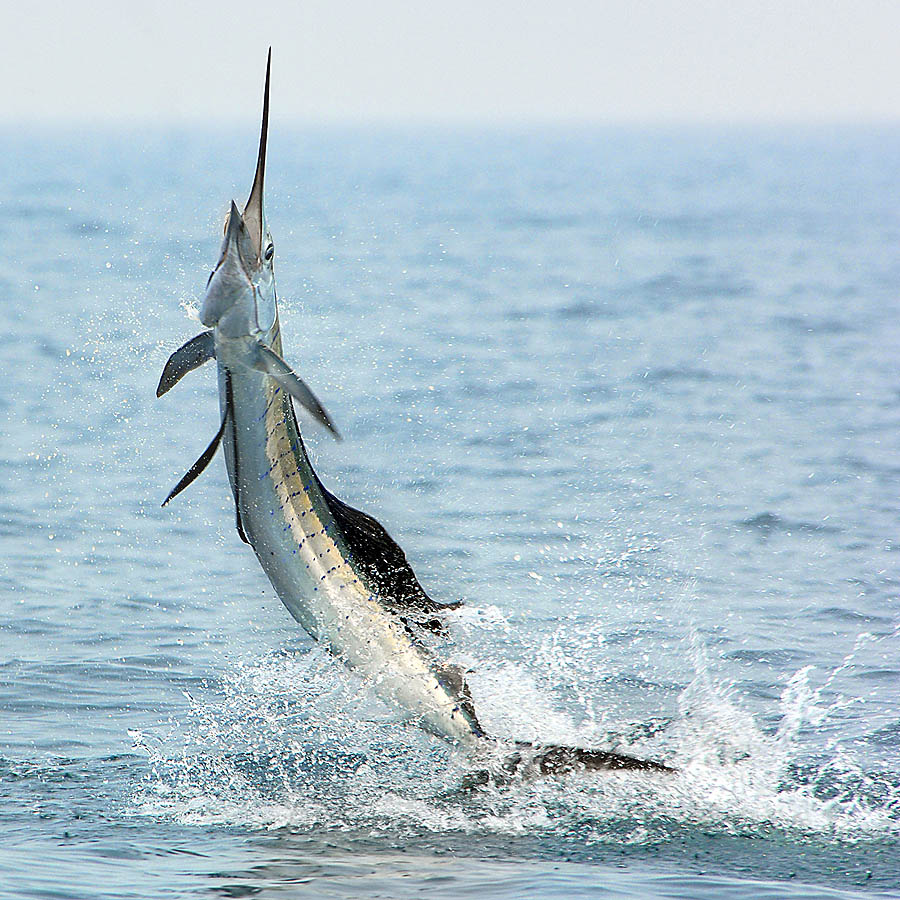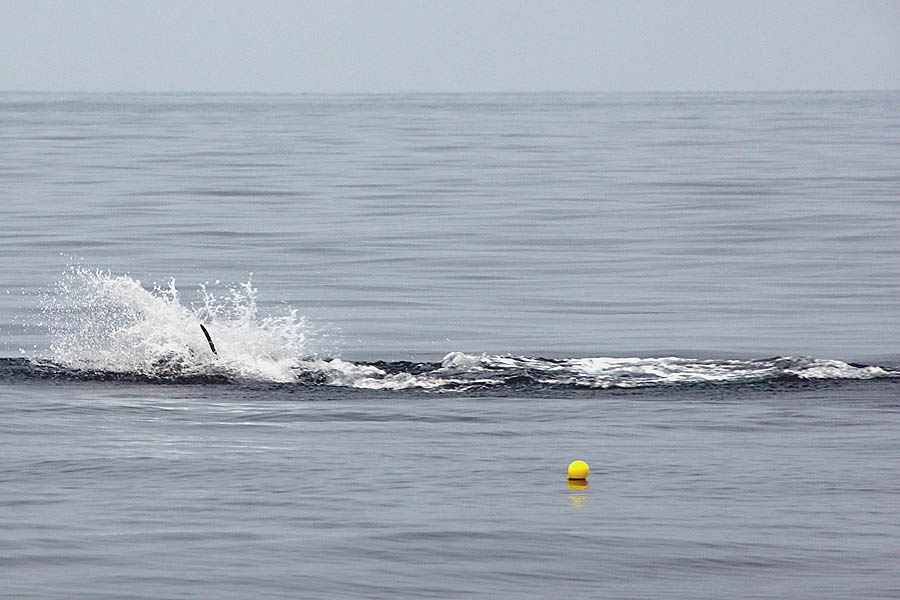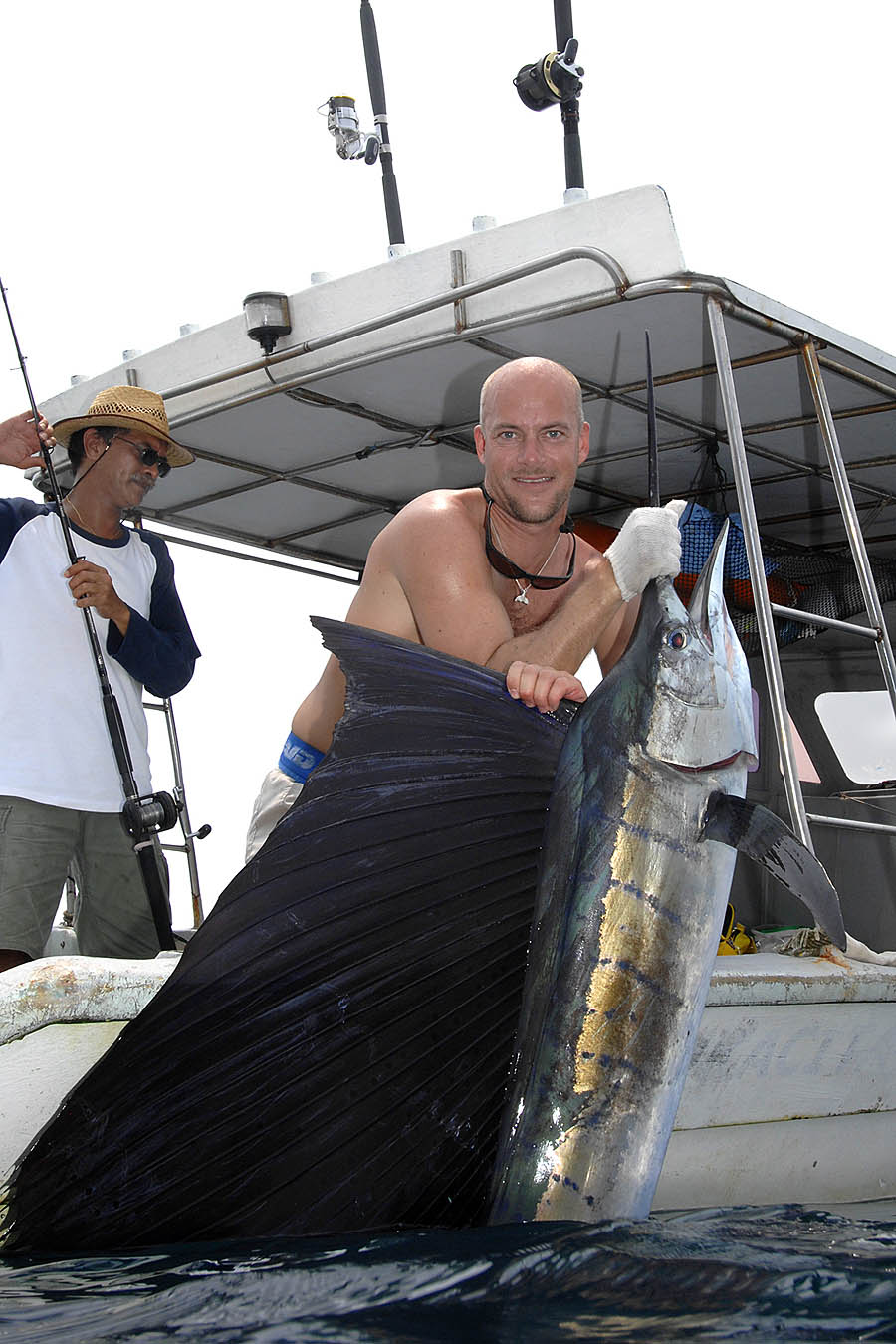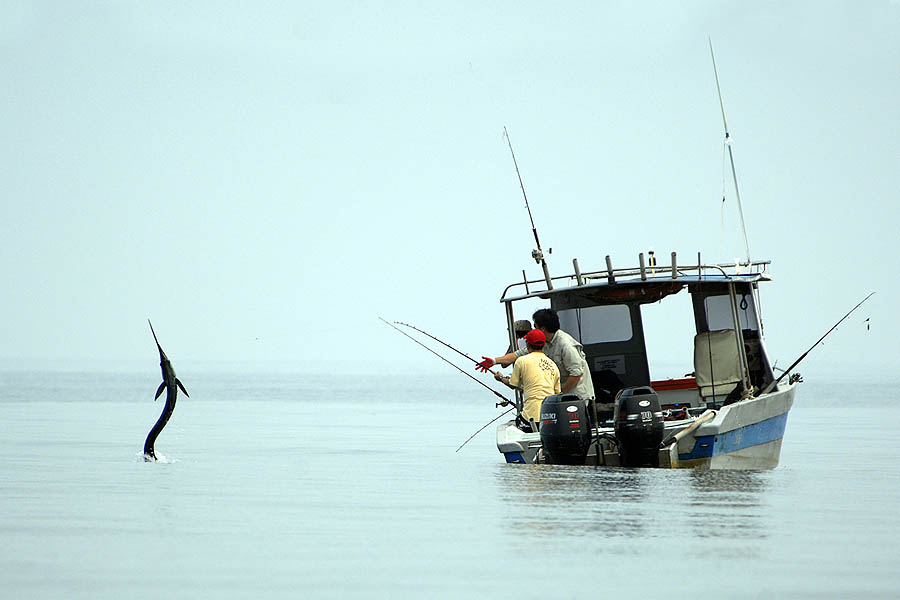 (2006-2019) Well, it didn't come as a surprise that the sailfish are wild fighters, but what I never realized, was that they display the most unbelievable colours, when they're agitated; hunting and fighting.
(2006-2019) Well, it didn't come as a surprise that the sailfish are wild fighters, but what I never realized, was that they display the most unbelievable colours, when they're agitated; hunting and fighting.
The decision to go fishing for the "sails" came, when I received information about a great setup in Rompin, Malaysia. My friend, Thorke, fished there last year, and his stories and photos left no room for doubt – I absolutely had to try it, myself. I booked 4 days fishing together with my friends, Steve and Kim, and we had the time of our lives with 72 strikes in 3 days (1 day we spent snorkelling and fishing for other species), 46 hook-ups, and 35 fish in the boat.
Sailfish
There are 2 species of sailfish, Atlantic sailfish (Istiophorus albicans) and Indo-Pacific sailfish (Istiophorus platypterus). We fished for the Indo-Pacific version, which is found throughout the tropical and subtropical parts of the Pacific Ocean – this species has also entered the Mediterranean Sea via the Suez Canal. Its maximum size is 3.48 metres, and maximum published weight is 100.24 kg, which is also the IGFA world record, caught in Ecuador.
Fishing methods
The most efficient method was a live scad suspended 3-4 metres under a balloon; we caught the scad on small herring-sabikis. The sailfish never took long finding the baitfish, and the baitfish reacted visibly, when danger was near. Even though, the baitfish couldn't move much, the sailfish attacked them violently, thrashing their beaks to knockout the unfortunate bait fish.
After this, well, do I need to say any more…
Bloody awesome explosive aerobatics !!!
Another method, involving live bait, was slow trolling (without balloons). This method was exhilarating beyond any trolling I have ever done before, because you hold the rod while trolling. Man, what a rush, when the sailfish take the bait… The hard part is to NOT STRIKE, when the sails take the baits, but only keep reeling, so the circle hooks can sink themselves well in.
 If these methods are not enough, you can test your nerves trying to catch them on surface poppers. The difficult part is setting the hook, so it stays in, but this is dramatically weighed up by the excitement of catching them this way, even if you loose most of the fish.
If these methods are not enough, you can test your nerves trying to catch them on surface poppers. The difficult part is setting the hook, so it stays in, but this is dramatically weighed up by the excitement of catching them this way, even if you loose most of the fish.
The sailfish didn't seem to mind the boat, because we frequently had them looking for prey right next to us, well within casting distance. It was a sublime experience watching these fast hunters chase the popper, flashing their blue and red colours in anger and excitement; and most often two or three fish joined in the popper pursuit.
Side catches
Being a species buff, myself, I was interested in having a look at other fish species as well. And so much the more enjoyment, when we caught narrow-barred Spanish mackerel (Scomberomorus commerson) and cobia (Rachycentron canadum), as these fish were almost instantly turned into sashimi, accompanied by lime, soy sauce and wasabi paste.
We had 4 fishing days, and with so many sailfish in boat after 2 days, we decided to "take a day off", and do other things.
We went to some small islands at Pulau Seri Buat; our primary aim was to do some snorkelling and try to target giant trevally. The snorkelling part went really well – we snorkelled in an exotic lagoon with a long coral reef full of life: rays, snappers, wrasses, octopus, butterflyfish, angelfish and a big guitarfish.
We didn't spot any gt's, but we had queenfish follow our baits + various bottom species caught on a small piece of fish.
 After Pulau Seri Buat, we went to a couple of very small islands, only inhabited by birds. Here, we started snorkelling and photographing underwater, but when three fairly big sharks came right up to us, for whatever reason, we decided it'd be safer to fish for them from the boat, rather than tempt them into trying man flesh!
After Pulau Seri Buat, we went to a couple of very small islands, only inhabited by birds. Here, we started snorkelling and photographing underwater, but when three fairly big sharks came right up to us, for whatever reason, we decided it'd be safer to fish for them from the boat, rather than tempt them into trying man flesh!
Steve quickly sorted out trace lines, cut up some baitfish and lurched them out behind the boat. It only took a few minutes for the sharks to find the baits – we lost the first two bites, but managed to land the third. It was the little one we got (obviously) – but still a great fish – a blacktip reef shark of about 20 kg.
Next year I am back in Rompin, fishing 7 days – the extra days to target other species more seriously, on top of the excellent sail'-fishing.
Tackle
The tackle they use on the boats is as follows: 15 kg Shimano Backbone series rods and Shimano TLD20 reels with 65 lbs Tuf line XP braid; 10 kg Shimano Backbone series rods and Shimano TLD15 reels with 50 lbs Tuf line XP braid; Calstar 700M rods and Daiwa Freams 4500J reels with 30 lbs Tuf line XP braid for popper/spin fishing. 2 metres 100 lbs nylon trace with size 5/0 Owner "Mutu Light" circle hooks.
We tried a new rod & reel on the sailfish, and we were more than pleased with the performance of both. The rod is a Shimano Speed 20/30 class, 2.3 meter; with its extra length and slimmer handle it was extra fun to fight the fish. The reel is an Avet Model MXL 6.1; the gearing (6,1:1) is optimal for this kind of fishing + the brake is super smooth. I can highly recommend this combination!
